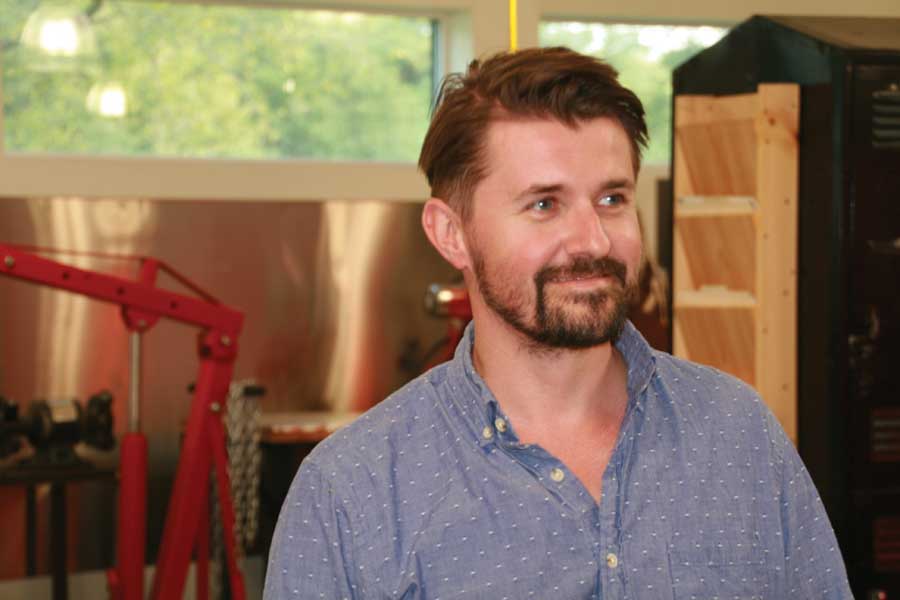Art professor Zebrowski explores new dimensions
Michael Zebrowski
Assistant Professor Michael Zebrowski is replacing Susan Calza in the Fine and Performing Arts department.
He has a master’s degree in architecture from the Cranbrook Academy of Art in Michigan, on which he draws to design his 3D art. He has also worked at the Rochester Institute of Technology, the University of Buffalo, Hobart and William Smith Colleges, Morgan State University, the Maryland Institute College of Art, and Mississippi State University.
According to Associate Professor Mary Martin, co-chair of Fine and Performing Arts, Zebrowski was an obvious fit for the position.
“There were a lot of things we looked for in a new colleague: professional art experience, teaching experience, research, ability to connect with students, and academic credentials,” says Martin. “For each one of these criteria, Michael hit it out of the park. That made it a very easy for us to choose him.”
Zebrowski comes to JSC with considerable teaching experience in both art and design, which for him are deeply related.
“I’ve been teaching for the last 10 years in architecture design and art programs,” he said. “I’ve taught at programs in Mississippi and Maryland and New York prior to coming here. My background, my own education is in architecture. I did my undergrad in architecture and my master’s was from Cranbrook Academy of art. So I’ve always kind of walked the line between art and design… It’s probably been over the last 50 years even, where artists have been playing with architecture and architects have been playing with art. I think you see a lot of back and forth recently.”
The relationship between art and architecture may seem physically obvious, yet Zebrowski believes that there are connections people make with art in many different ways. His projects and ideas for future projects reflect this.
“I have a few ongoing projects. One in particular involves a series of laboratories that find intersections between architecture, science, and art,” says Zebrowski. “My interests in science are rooted in astronomy. I’ve been exploring astronomy through art and architecture. By this I mean, these laboratories would ultimately be constructed and used by the general public and practitioners of 3D art of science to use for research, demonstration, or for their own observations of astronomy. One that I have been working on, and I’ve been working on a series of them, one is called light lab. It’s traditionally in science been an observatory with a telescope looking at light but I’m also thinking about it as something that incorporates our own perception of our own star the sun. It becomes a space where you can engage and understand the quality of daylight and work with it. You can experience it in a very different way. It becomes again, a kind of scientific instrument that can be used for observation or used as a means of perception versus a more finite way to explore it. Those are the ongoing projects. They are larger projects and they are being built in notebooks and through conversations and reading.”
As the head of a smaller art-based practice, Zebrowski hopes to complete one or more art installations at JSC. While these installations take time and it is only possible for Zebrowski to complete three to four a year, he still hopes to finish more than two or three this year alone.
“Mostly these projects are instillation-based,” he said. I hope to have at least two or three this year so hopefully you guys will see me and get to know me that way as well, through the work itself.”
Max Van Wie joined the Basement Medicine staff in Spring 2014, assuming the position of staff reporter.



